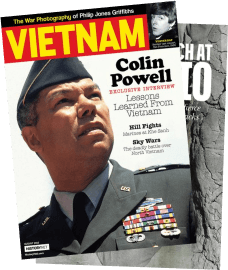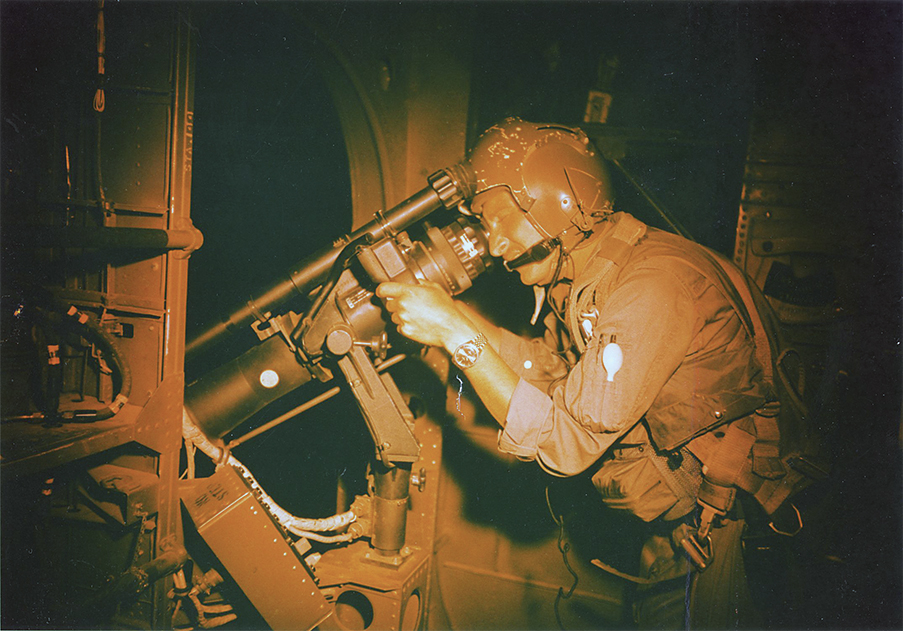In the words of one gunship navigator, Fairchild AC-119s “resembled a black and green Hostess Twinkie with wings.” Some nicknamed the aircraft the “Dollar 19.” The Air Force called them fixed-wing gunships. Enemy forces in the war feared these “dragon ships” with their tremendous firepower. However referenced, AC-119G “Shadows” and AC-119K “Stingers” were C-119 cargo aircraft converted to gunships in the late 1960s. Flown by skilled airmen and supported by exceptionally dedicated ground crew, these aircraft were highly effective during the war.
How the Dragon Ships Began
The roots of the Shadow and Stinger gunships go back to Sherman Fairchild, an entrepreneur from the Golden Age of Aviation who founded many companies, including Fairchild Aviation. Fairchild produced aircraft such as the C-82 Packet, designed to replace early World War II transport aircraft such as the Douglas C-47 (the military version of the DC-3). Packets were redesigned with bigger engines and the cockpit moved towards the nose, becoming known as the C-119 “Flying Boxcar.”
First flown in 1947, over 1,100 were built with production ending in 1955. Boxcars had a 109-foot wingspan, two Wright R-3350-85 Duplex Cyclone engines (similar to those used in B-29 Superfortresses), a cruising speed of 180 knots, and a range of 1,600 miles. C-119s saw action in numerous unique missions, such as dropping prefabricated bridge components to U.S. Marines fighting their way out of North Korea’s Chosin Reservoir in 1950. Boxcars air-dropped French paratroopers at Dien Bien Phu in 1954 and completed midair retrievals of capsules containing spy satellite film of the Soviet Union in the early 1960s. As newer cargo aircraft such as the Lockheed C-130 became available, the C-119’s days appeared to be numbered—but one more mission, not foreseen by Fairchild’s engineers, remained.
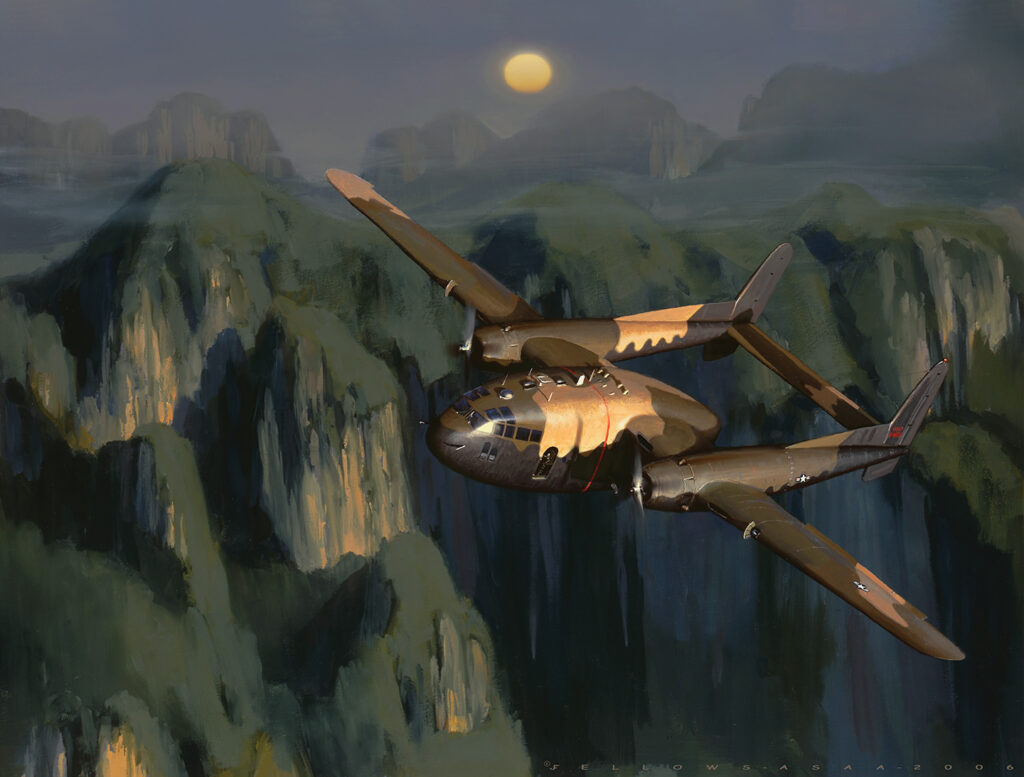
Independent of C-119 development, the military considered using fixed-wing gunships. Lt. Fred Nelson unsuccessfully promoted side-firing machine guns from an aircraft in the 1920s. In 1942, Lt. Col. Gilmour MacDonald revived the idea and promoted gunships for years, but the military remained unconvinced. Finally, Capt. Ronald Terry (often referred to as “the father of the gunship”) was given permission to test the concept in August 1964. The successful results led to Terry and Lt. Edwin Sasaki briefing Air Force Chief of Staff Gen. Curtis LeMay. LeMay approved further tests in Vietnam although most of his staff was opposed to the idea.
Other aircraft converted to gunships in Vietnam were the Douglas C-47 and Lockheed C-130. Secretary of the Air Force Harold Brown wanted to use the older and slower C-119 for this purpose, as he needed C-130s for transport duty. Seventh Air Force Commander Gen. William Momyer was opposed, as introducing AC-119s to Vietnam would require additional logistical support. Also, C-119s had a reputation for mechanical problems such as landing gear and engine mount failures, with some describing Boxcars as “thousands of rivets flying in loose formation.” Nevertheless, Brown contracted with Fairchild Hiller to modify 26 Boxcars to AC-119G Shadows by adding four 7.62mm Gatling guns. Fairchild modified another 26 Boxcars as AC-119K Stingers that added two multibarrel 20mm M61 cannon, a fire control system using an analog computer, night observation devices, and infrared equipment to search out targets.
Two jet engines were added to supplement the propeller engines on AC-119Ks, increasing the Stinger’s chances of returning home if a propeller engine was lost. The added thrust also allowed for higher maximum takeoff weight (thus more ammunition) as well as enabling the flight engineer to reduce the power setting and the fuel mixture richness for the piston engines, curtailing the exhaust plumes and making optical tracking difficult for enemy gunners.
“Screw the F-4s, get me a Shadow!”
Training for the AC-119 aircrews included gunship equipment, attack techniques, and basic understanding of the Vietnamese and Thai civilian populations. A “Shoot Down Board” at jungle survival school contained the names of Air Force personnel who were shot down or forced to abandon their aircraft over Southeast Asia. Instructors found that the board helped students focus on the matter at hand—especially as there were two blank panels on the wall to list additional names. Once in country, AC-119Gs were based at locations such as Phu Cat, Phan Rang, Da Nang, and Tan Son Nhut.
Missions included providing close air support for troops in contact with the enemy, and attacks against the enemy and supplies on the Ho Chi Minh Trail and Cambodia. American and South Vietnamese convoys would be protected by AC-119 gunships, while Forward Air Control aircraft would look for enemy troops preparing ambushes. Enemy forces often would not fire on the AC-119s as they knew the fire would be returned. Forces on the ground appreciated the work of the Shadows and Stingers. In one instance, a Special Forces commander on the ground, when advised of Phantoms coming to assist, shouted into his radio: “Screw the F-4s, get me a Shadow!”
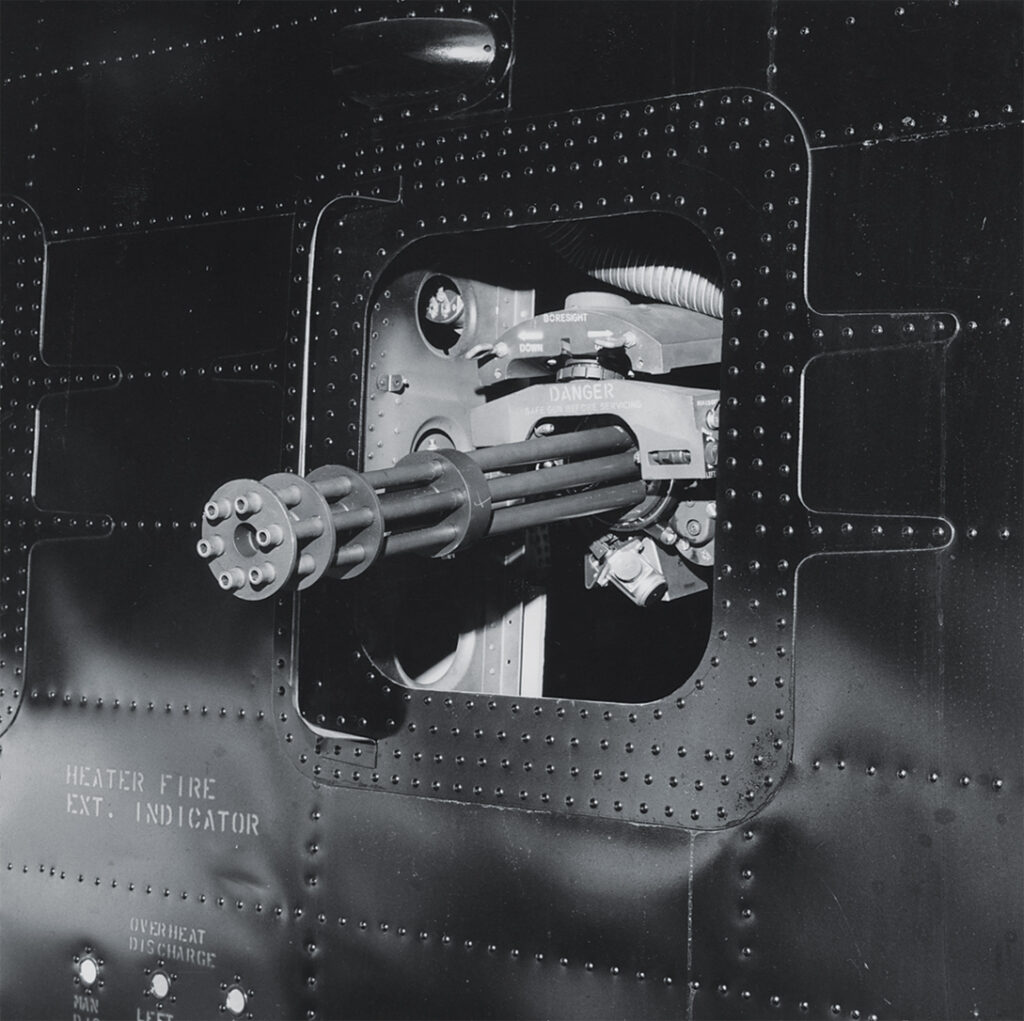
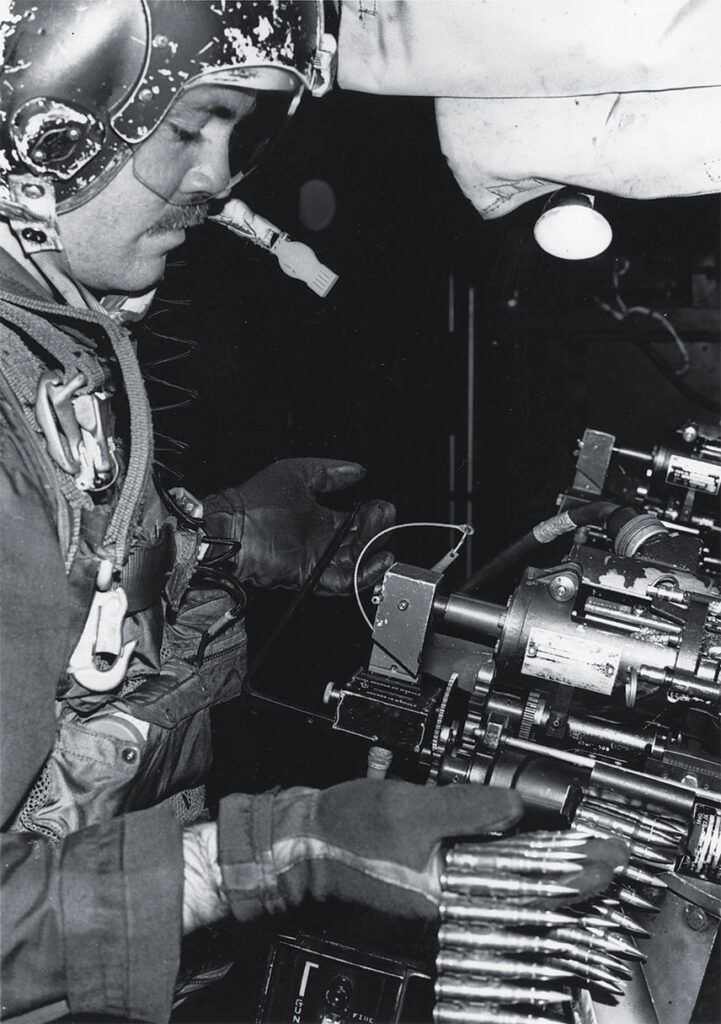
Flight altitudes varied based on many factors; firing at enemy personnel would often occur from about 2,500 feet Above Ground Level (AGL) using their miniguns and at about 5,000 feet AGL with 20mm cannon against vehicles. The AC-119s were busy. In 1969 alone they saw 3,700 sorties, 14,000 combat hours, and 35 million rounds of ammunition expended. Anti-aircraft fire was a constant risk—gallows humor on board referred to enemy fire going between the tail booms and horizontal stabilizer as “field goals.” While focused on the target, pilots used aircraft intercom to direct the gunship crew and the radio with ground forces. Extensive monitoring of all radio and intercom traffic was required and all on the gunship looked for anti-aircraft fire.
Night mission Equipment
AC-119Gs typically had six crew on board for day missions or eight for night missions. AC-119Ks often flew with 10 airmen—a pilot, copilot, flight engineer, table navigator, Night Observations Sight (NOS) operator (who would amplify any available light and send coordinates to the fire control computer) and Forward Looking Infrared (FLIR) operator (both manned by navigators), gunners that loaded and maintained (but did not fire) the weapons, and an Illuminator Operator (IO).
The IO operated the flare launcher and the 1.5-million-candle power light (white light and infrared) at the rear of the aircraft and served as a jumpmaster if the crew needed to bail out. All guns were mounted on the left side of the aircraft, requiring the crew to fly in a continuous left bank orbit around the target; crews often preferred the term “orbit” to “circle.”
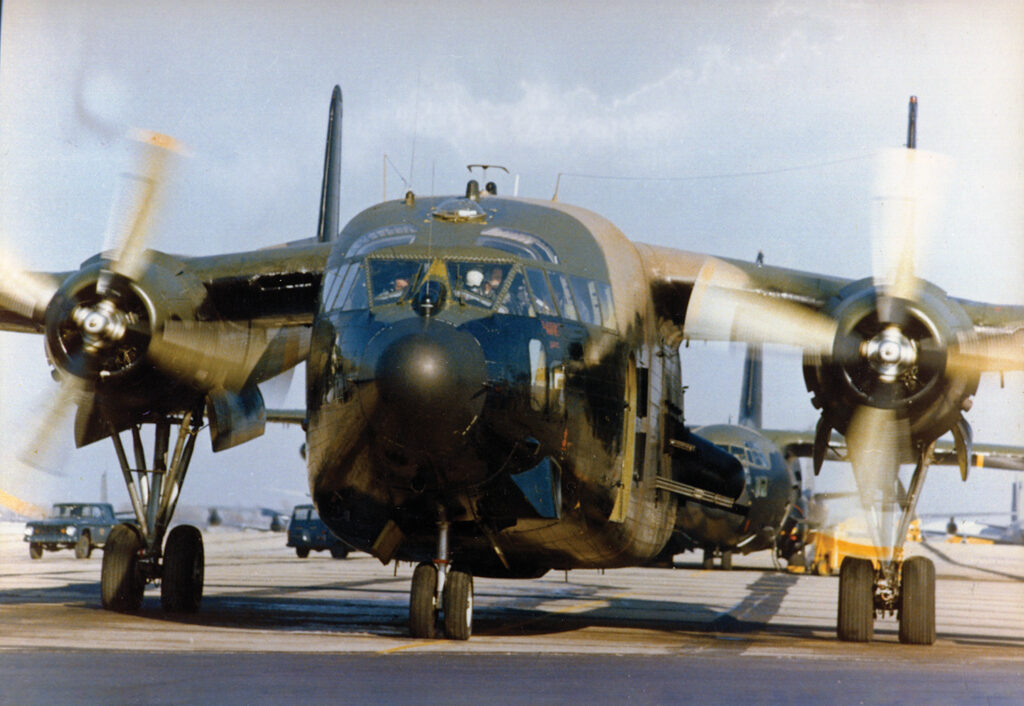
Vertigo and target fixation were serious dangers for pilots while flying the firing circle. The FLIR sensor was used to search for intense spots of infrared energy—which could be enemy soldiers or large animals. When the gunners weren’t loading or repairing guns, they supplemented the IO to spot anti-aircraft fire as “scanners.”
The first AC-119 unit in country was the 71st Special Operations Squadron (SOS), composed of Air Force reservists who were stationed at Indiana’s Bakalar AFB. Gunship training for these airmen was completed at Ohio’s Lockbourne AFB. In December 1968, the 71st began deploying to Southeast Asia. This deployment represented the first time since the Korean War that Air Force Reserve personnel conducted flights inside a combat zone; missions began in early 1969. Some of the AC-119s, given their somewhat limited fuel capacity, took almost a month to make the flight from Lockbourne to South Vietnam.
During its six-month deployment in the theater, the 71st completed over 6,200 combat flying hours on over 1,500 sorties. Members of the 71st earned numerous awards, including an Air Force Outstanding Unit Award, which mentioned the Reservists firing a relatively “sophisticated weapons system being battle tested for the first time, working often under intense ground fire, in periods of inclement weather, and almost totally during hours of darkness.” When the 71st returned home, about 65% of the personnel transferred to the active-duty 17th SOS, which flew AC-119Gs. The third unit seeing extensive action was the 18th SOS, operating with AC-119Ks.
Crew Life
Numerous firsthand accounts are available that add perspective to crew life, both in the air and on the ground. Virtually all accounts mentioned how teamwork, technical know-how, and communication were essential in successfully completing the missions. In one example, Flight Engineer Jay Collars recalled when his AC-119 “took a .50 caliber hit through the right propeller oil line, severing the line and causing a runaway propeller. The aircraft immediately rolled and yawed left and began losing altitude.…While the pilots struggled to gain control, I (as flight engineer) began running the emergency checklist. Needless to say, for a few minutes there was a lot of scrambling on the flight deck.” Nevertheless, Collars’ crew managed to safely land the aircraft.
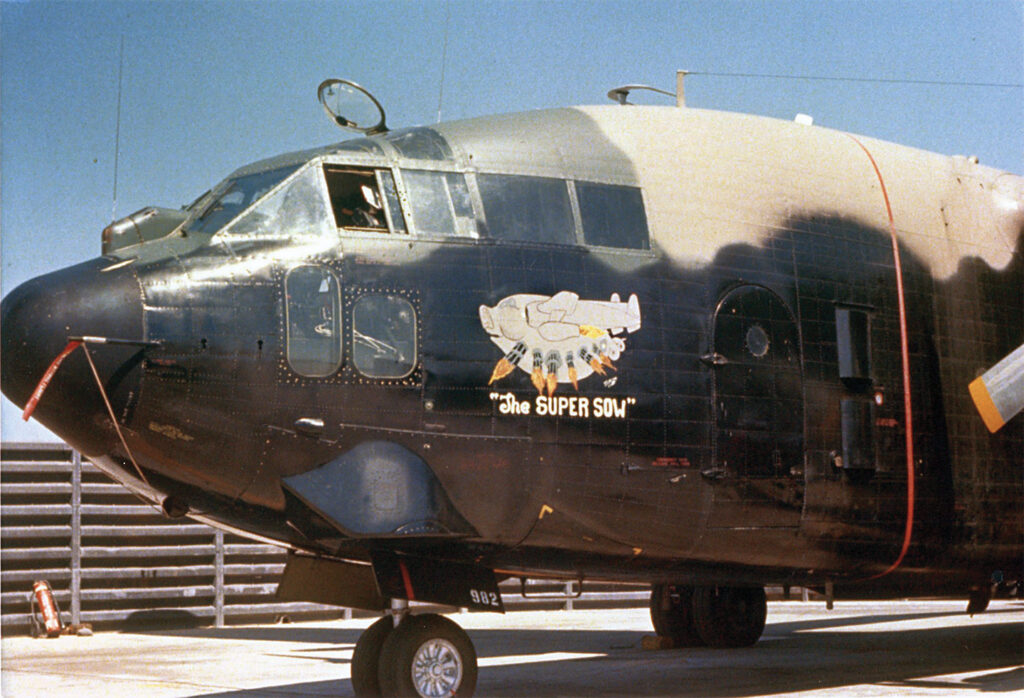
Copilot Wayne Laessig described attacking ground targets. After completing the “Strike Checklist,” a pilot would say, “Copilot, you have the pitch.” The pilot controlled firing the weapons, using a pylon turn flying technique (a constant 30-degree turn), resulting in concentrated fire at ground targets. The aircraft commander/pilot flew rudder and ailerons, the copilot flew pitch, and the flight engineer worked the throttles and monitored the gauges—a three-man effort requiring extensive coordination. Laessig noted, “There wasn’t a single crew member on the airplane you didn’t need (for) the whole mission. Learning that was the best thing in my whole career.”
The often-undermanned maintenance crews routinely worked 12-hour shifts and may have taken shortcuts to get the job done, given the high mission tempo. Crew Chief Jesse Lau wrote that occasionally the crew would “clean our engine up the ‘extremely unsafe’ way…the POL truck would pull up and we would fill up the tanks on both wings. After I’d get done fueling on the left wing, I would shoot the fuel from the hose into the engine and clean the engine that way. That’s extremely unsafe, dangerous, and guaranteed to get you a court-martial and jail time if you ever got caught doing that stateside. But…we ran into time constraints (as) there was a war going on.”
Mission Risks
Gunners had a very challenging role. Everett Sprous, a gunner on AC-119Ks, loaded and repaired the 20mm Vulcan cannon (firing 2,500 rounds per minute) and 7.62mm miniguns (6,000 rounds per minute). Sprous recalled the noise: “The gunship was shaking so hard that you believed at any second the aircraft would come apart. The noise and smoke were so intense that it would take a couple hours after a mission to clear your brain. Gun barrels would turn red, then white, from bullets being fired at such high rates.” Reloading the 20mms required using a drill-like device weighing between 30 and 40 pounds while the aircraft might be in a steep banking maneuver. Scanners were always alert for incoming AAA and their calls for evasive action saved many aircraft and crew.
Midair collisions were another risk, especially as numerous night missions were flown. On station over Cambodia, pilot John Windsor’s crew was talking to a FAC who claimed he was about 10 miles away. “Suddenly an OV-10 filled our windscreen,” he later described. “He crossed directly in front of us from left to right, and at our same altitude. He was flying with his exterior light off and was so close I could actually read his instrument panel.…To this day, I don’t know how we didn’t hit him with our right propeller.…This clown drove right across our nose at our altitude.” That FAC was ultimately shipped out.
Two of the best-known missions were Stinger 41 and Stinger 21 (representing the aircrafts’ call signs). Both were representative of the challenges faced on any AC-119 flight—including enemy action, mechanical malfunction on the aircraft, and/or bad weather. On May 12, 1972, an AC-119K mission over South Vietnam (“Stinger 41”) was flown by Capt. Terence Courtney. This was a high-risk daylight mission near An Loc. Stinger 41 was heavily damaged by AAA fire, causing the loss of both right engines and a fire in part of the right wing. Courtney and copilot Lt. Jim Barkalow kept the heavily damaged aircraft aloft, allowing seven crew to bail out (and later be rescued), but the aircraft crashed.
Courtney was posthumously awarded an Air Force Cross for sacrificing himself and allowing most of the crew to survive. In addition to Courtney, Capt. David Slagle and Staff Sgt. Kenneth Brown could not get off the aircraft in time and died in the incident. The Air Force Cross award stated in part: “Control of the aircraft had become so difficult that Captain Courtney had to use all his strength to maintain control. [Courtney] wrapped his arms around the yoke to keep the aircraft’s nose from pitching down. When he could no longer control the aircraft, he ordered his crew to bail out…. His courage, gallantry, intrepidity, and sense of responsibility towards his fellow men overrode any desire…for his own self-preservation.”
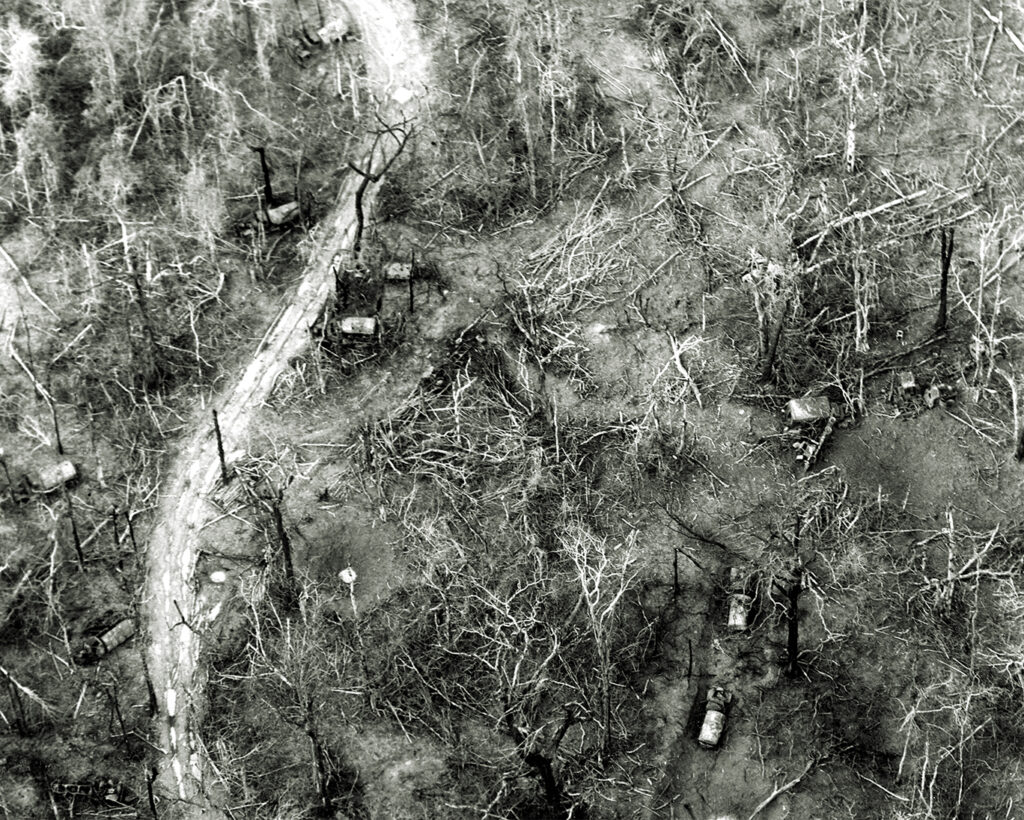
Stinger 21 involved a May 1970 mission commanded by Capt. Alan Milacek, who along with his crew were awarded the Mackay Trophy for the most meritorious flight of 1970 when their heavily damaged AC-119 was flown safely back to base. Hit by ground fire, the aircraft was about 90 minutes from Udorn, Thailand, with a series of mountain ranges to cross, including a 9,300-foot peak, on the return.
Milacek ordered the crew to toss out everything they could to reduce weight. Milacek and copilot Capt. Brent O’Brien nursed the plane back to Udorn. Inspection of the damaged aircraft revealed that more than 14 feet on the leading edge and more than 17 feet on the trailing edge of the right wing were missing, with damage to the right outboard aileron and to a fuel tank at the end of the wing. Milacek was heard over the intercom as the aircraft went onto the taxiway at the end of the runway: “Thank you, Lord, thank you.”
A Changing War
While the AC-119s and their crews were compiling a distinguished combat record, the war itself was changing. As American participation in the war wound down, President Nixon’s Vietnamization program began turning the war over to South Vietnam. Part of that effort included AC-119 personnel training their Vietnamese counterparts, such as Air Force Capt. Hoa Ngoc Bach. He later fled from the South after the communist takeover and came to the U.S. as a refugee at Camp Pendleton, California.
With the assistance of navigator William Gericke, Bach secured housing, learned to drive, and became an American citizen. Changing his name to Harold Hoa Bach, he sponsored 21 family members in coming to America, and had a 28-year career in the auto industry.
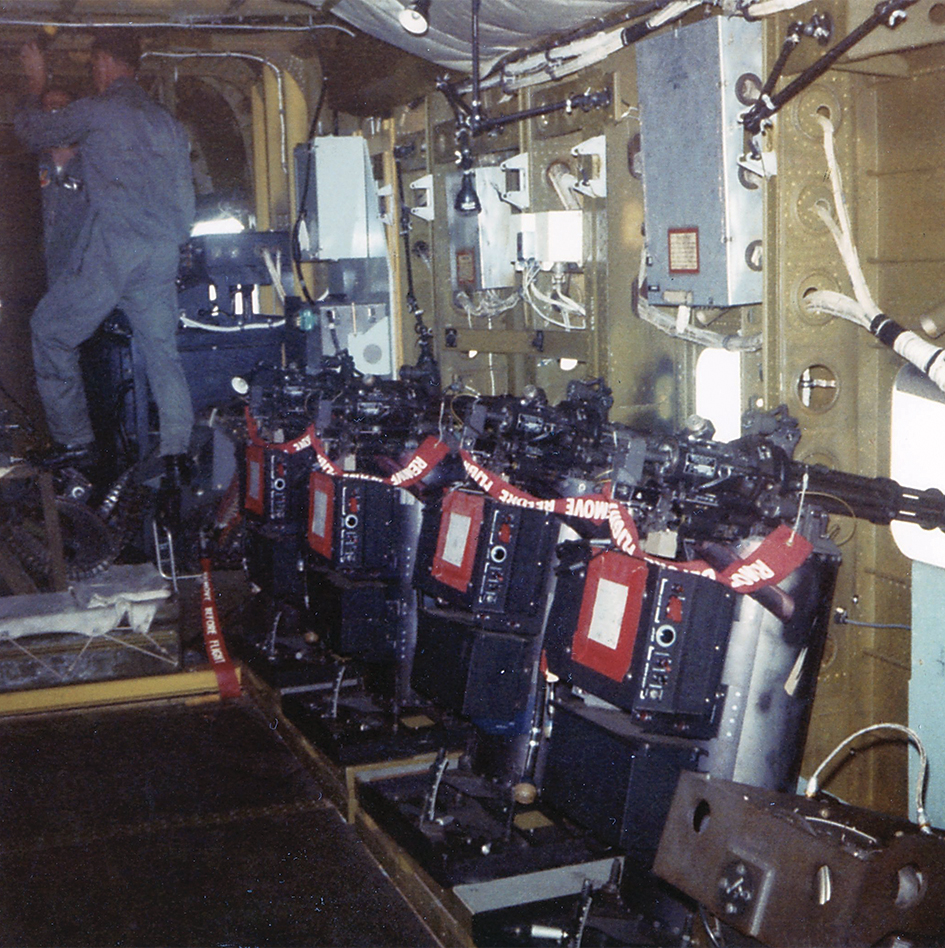
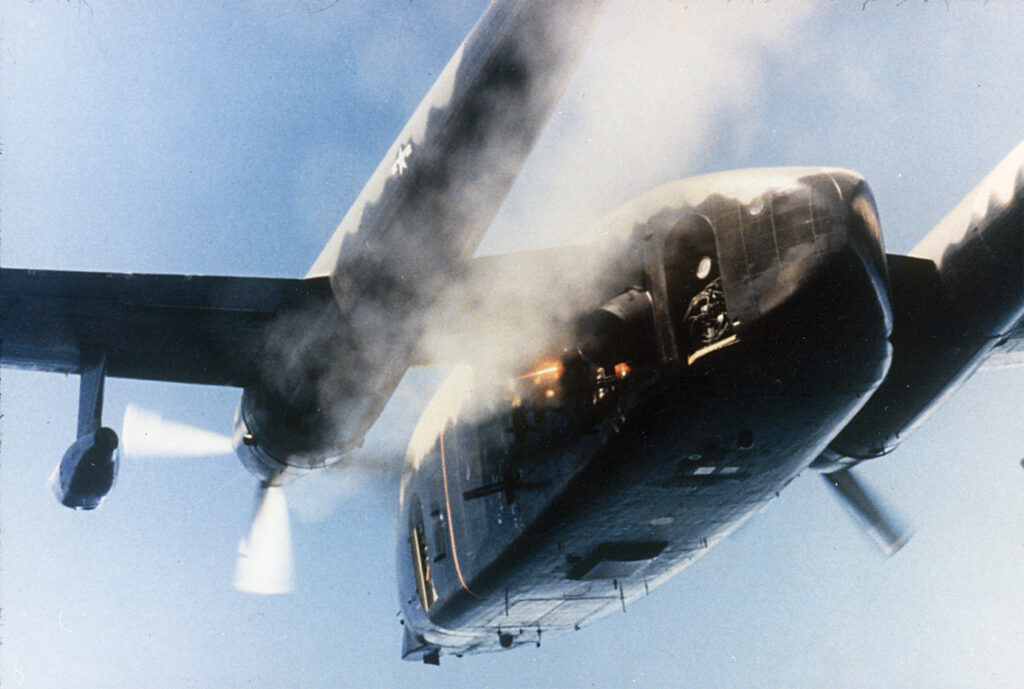
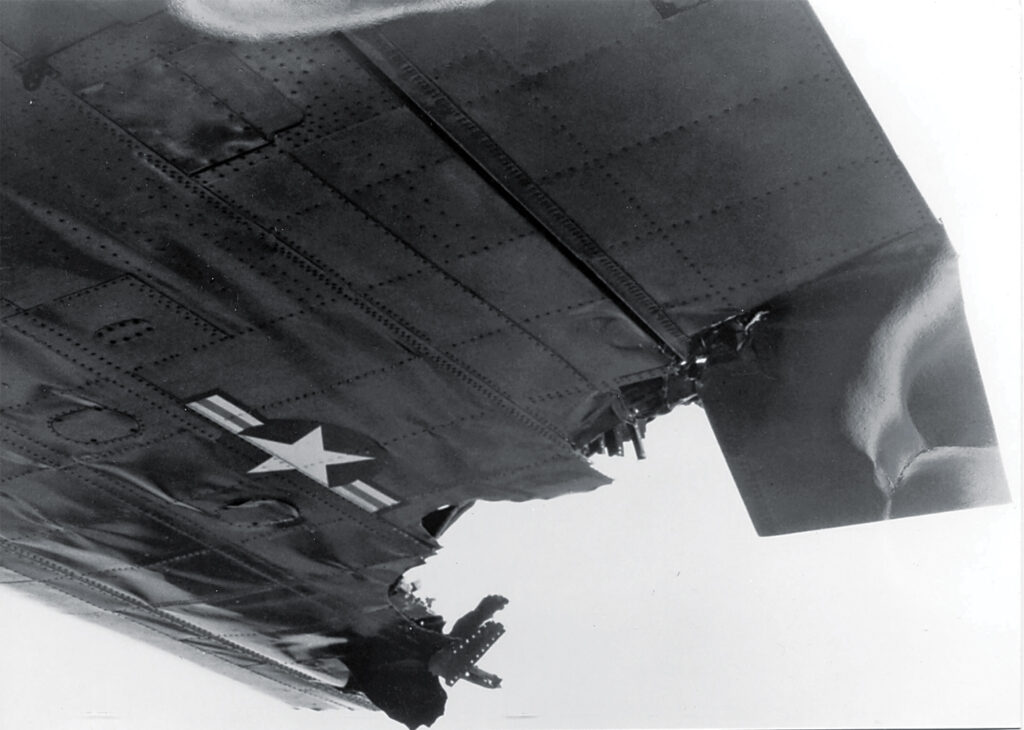
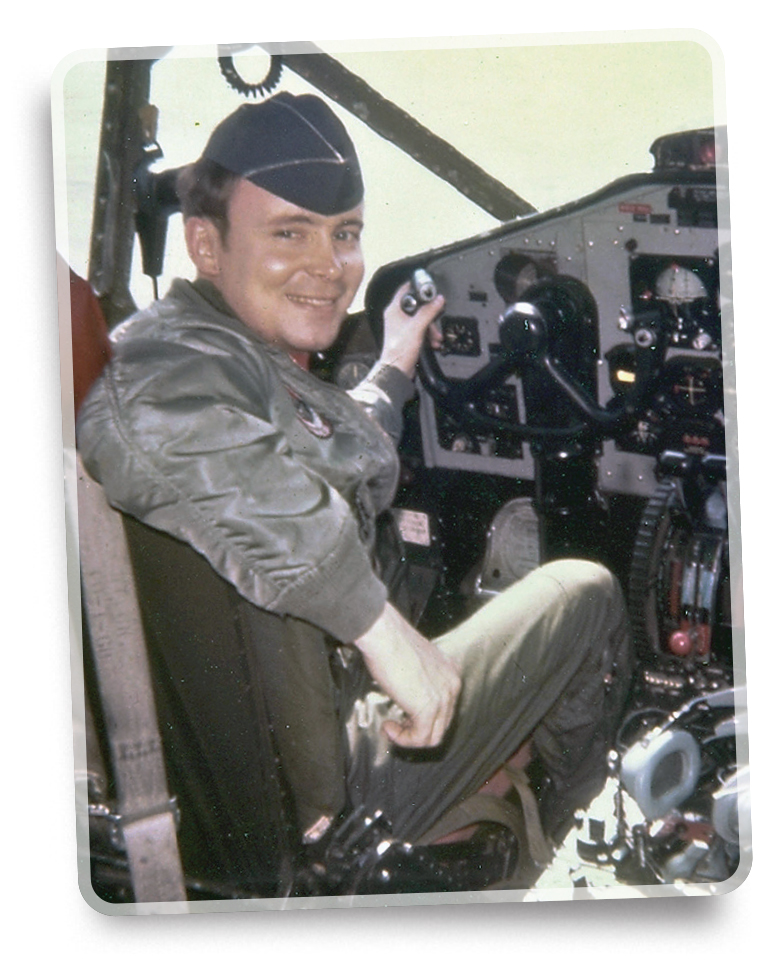
As the war concluded, AC-119 crews returned to the U.S. while the aircraft remained behind. The military record of the AC-119 was assessed in a Contemporary Historical Examination of Current Operations report, which concluded that the AC-119G was an extremely useful weapon system, performing a variety of missions above and beyond its primary mission of close air support. The AC-119K was an excellent truck killer and proved equally useful in providing close air support for troops in contact. AC-119 crews “performed assigned tasks with resourcefulness, overcoming equipment limitations through operator skill.”
What the air crews and ground support personnel accomplished was remarkable. Seventeen airmen that were part of the Shadow and Stinger missions were killed in action. These personnel all demonstrated a high level of courage, skill, and dedication to duty while completing these missions, flying aircraft originally designed as cargo haulers.
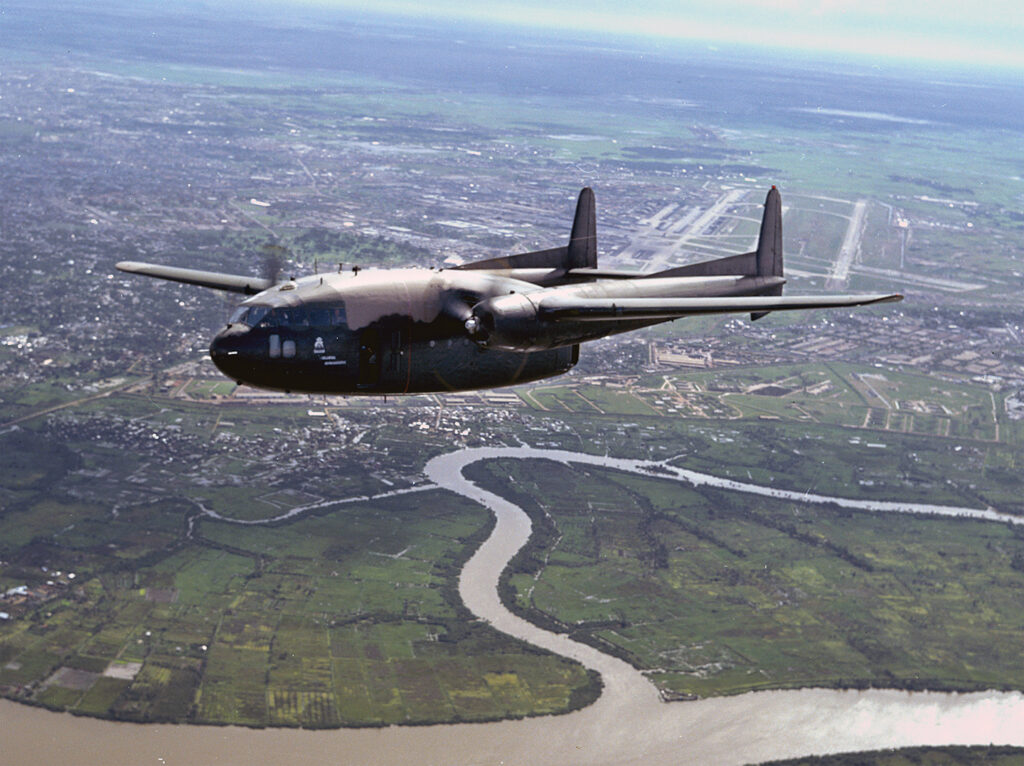
While popular and political support for the war was dwindling, the crews, whatever their rank, maintained a high level of camaraderie, teamwork, and desire to successfully complete the missions, while saving countless lives of those on the ground.
Barry Levine works at the Henry Ford museum in Dearborn, Michigan, vol- unteers at the Yankee Air Museum in Belleville, Michigan, and writes on a variety of aviation and history topics. His most recent book is Michigan Aviation: People and Places that Changed History.
This story appeared in the 2024 Winter issue of Vietnam magazine.
